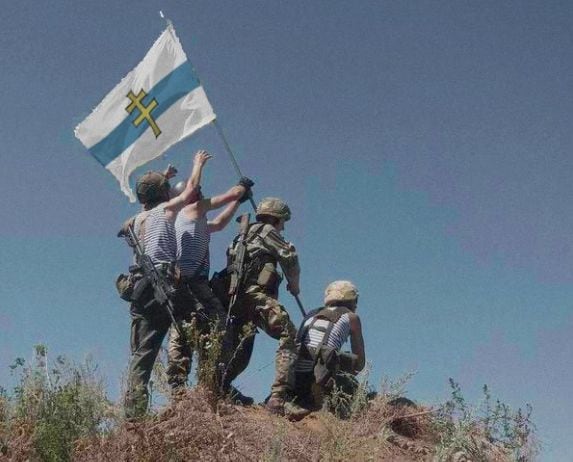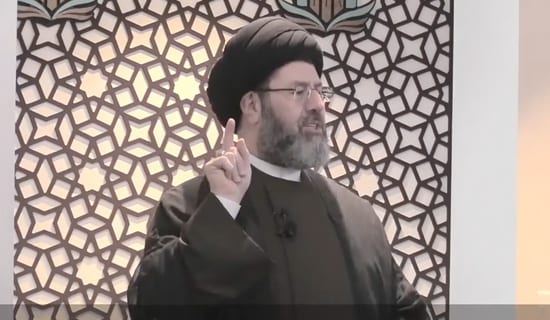The independent media outlet Belarus Digest published an article, titled "Viejšnoryja: The Belarusian Defense Ministry Plays With Fire," by Belorussian political analyst Dzmitry Mitskevich.[1] The article emphasizes that the Russian and Belarusian authorities are trolling the Baltic States in the September 14-20 Zapad-2017 exercises. The Russian and Belarus forces participating in Zapad-2017 are reacting to a scenario, in which extremists, supported by two neighboring states, invade and then occupy the western part of Belarus, where they establish a separate state called Viejšnoryja. This new state is propped up by its two western neighbours: Viesbaryja and Lubienija. According to Mitskevich, this trio of Baltic sounding countries is no coincidence: "Viejšnoryja itself is the Belarusian part of Lithuania Propria – a historical region and the cradle of the Grand Duchy of Lithuania… What's more, Viejšnoryja coincides suspiciously with the Catholic-majority part of Belarus."
Mitskevich also notes that some experts considered the choice of Viejšnoryja, an attempt to split the Belarusian population along religious lines: the Catholic West against the Orthodox 'Russian world.' "The fact that two neighboring states were supporting 'Viejšnorian extremists' was also taken to symbolize NATO destabilizing the situation in Belarus in order to 'break it apart from its union with Russia'," writes the author.
The following are excerpts from Mitskevich 's article:[2]

(Source: Eng.mil.ru)
'Russian And Belarusian Authorities Are Trolling The Baltic States'
"On 29 August in the Palace of the Republic, the Chief of the General Staff of the Belarusian Armed Forces and the First Deputy Minister of Defense, Major-General Aleh Belakoneu, held a briefing on the Belarusian-Russian military exercises Zapad-2017 (West-2017). The briefing and the official press-release caused an unexpected reaction in society.
"More than 50 media representatives and 14 members of the military-diplomatic corps accredited by the Belarusian Defense Ministry attended the event. The media drew special attention to the plan and scenario of the exercises, which led to many questions.
"According to the scenario, extremists, supported by two neighboring states, invade a part of Belarus, which they then occupy, setting up a different state. It is the role of Belarus and Russia to fight them. Interestingly, according to the scenario, extremists take over in the western part of Belarus. The map of the exercise shows the precise territory of the alleged enemy. The new state is called Viejšnoryja and is propped up by its two western neighbours: Viesbaryja and Lubienija.

Map of Viejšnoryja, in the Zapad-2017 exercises. (Source: Nn.by)

Map of Viejšnoryja, in the Zapad-2017 exercises. (Source: Twitter)
"First of all, it should be noted that all these names sound Baltic. It is thus likely that the Russian and Belarusian authorities are trolling the Baltic states, which frequently voice alarmist sentiments about West-2017 being the beginning of a Russian invasion of Europe.
"Historically, Viejšnoryja itself is the Belarusian part of Lithuania Propria – a historical region and the cradle of the Grand Duchy of Lithuania. This cannot be a simple coincidence. What's more, Viejšnoryja coincides suspiciously with the majority-Catholic part of Belarus.
"Meanwhile, the tone of the briefing and the following press-release were unusual and somewhat unclear. At first, Mr. Bielakonieŭ mentioned the NATO military exercises in Eastern Europe which recently took place, claiming they were designed to prepare for an assault on neighboring states.
"He then spoke about the Rapid Trident exercises in 2017 in Ukraine and the intention of the Ukrainian Right Sector group to deploy temporary militias near the Ukrainian-Belarusian border in case of an invasion from the north. Such rhetoric is especially odd as Belarus had promised not to strongly criticize NATO and Ukraine for their military exercises in the region.
"This presentation of West-2017 was thus an epic fail for the Belarusian Defense Ministry, as its effect was the complete opposite of the intended one. Originally, the ministry intended to show society that West-2017 was not a threat to the independence of Belarus or its international image. Instead, the Ministry of Defense aggressively accused NATO of belligerence and openly trolled the Baltic states. The media focused not on the number of Russian troops and comparisons between West 2017 and similar NATO exercises in Eastern Europe, as planned, but on the division of Belarus into parts, declaring one of them an 'enemy.'
'The Exercises' Scenario Became The Butt Of Jokes On The Internet'
"The reaction in society was immediate. Right after the press release, all independent media sources posted a map of the exercises showing the imaginary states. Some experts considered this an attempt to split the Belarusian population along religious lines: the Catholic West against the Orthodox 'Russian world.' The fact that two neighboring states were supporting 'Viejšnorian extremists' was also taken to symbolize NATO destabilizing the situation in Belarus in order to 'break it apart from its union with Russia'.
SUPPORT OUR WORK

"At the same time, the exercises' scenario became the butt of jokes on the internet: the country has taken on a life of its own as a meme. Viejšnoryja already has an official website, which also issues Viejšnorian ID cards and passports. At the time of writing, almost 7,000 people had applied for Viejšnorian passports.
"Some enthusiasts decided to take the 'statehood' of Viejšnoryja even further, creating a coat of arms, flag, currency, and even a Twitter account for the Viejšnoryja MFA. It is now possible to buy a number of products with Viejšnoryja's name and logo, including passport covers, t-shirts, magnets, and more.

Coat of arms fridge magnets (Source: Belarusdigest.com)
"At Lidbeer festival in the western city of Lida, people were seen waiving the Viejšnorian flag. Jokes about the imaginary state are quickly becoming popular on the Belarusian internet, with some claiming that 'The Belarusian authorities have already asked Viejšnoryja to provide them with a loan.'

The imaginary state even has its own currency (Source: Fondsk.ru)

Raising the flag in "Viejšnoryja" (Source: Fondsk.ru)
"More soberingly, however, the exercises' scenario was one presented by the Belarusian Defense Ministry itself. Had Russia unveiled the scenario, the Belarusian military could have managed to save face, as the low level of trust between the two states is a well-known fact.
"Presumably, the scenario was originally a Russian idea, aiming to discredit Belarus once again and cause a harsh reaction from neighboring states. Either the Belarusian authorities failed to see through this trick or simply had no choice but to agree to it and present it publicly. Seeing as Russia had already started with such provocations before West-2017 even started, they are bound to continue. The way Belarusian authorities react to them could determine the continued independence and further development of the country.

Internet users granted former Georgian president Mikheil Saakashvili the Viejšnoryja ID Card, after he was stripped of his Ukrainian citizenship in July. (Source: Belarusdigest.com)
Viejšnoryja Quickly Became An Internet Symbol Of Opposition To The Belarusian Regime
"On one hand, the Belarusian authorities are lucky that the release of the exercise scenario resulted only in jokes, rather than official statements from neighboring states and international organizations. On the other hand, this situation is revealing of the negative image of the Belarusian Defense Ministry and the military as a whole: society does not take them very seriously.
"At the same time, Viejšnoryja quickly became an internet symbol of opposition to the Belarusian regime: some people who disapprove of the authorities have started calling themselves Viejšnorians. A tongue-in-cheek awareness campaign calling for 'the protection of Viejšnoryja from Russian aggression' and creation of 'Vejsnorian volunteer forces' now also exist. People are using the word 'Viejšnorian' to mean 'traditionally Belarusian' as opposed to Soviet or Russian.
"However, although opponents of the Belarusian regime are using the Viejšnoryja meme in jest, supporters of the 'Russian world' could use it more seriously, such as for information campaigns against Belarus.
"For example, pro-Russian propagandists have started using the names 'Viejšnoryja' and 'Viejšnorians' to describe Belarusian patriots or opponents of the Belarusian authorities and Russian aggression.
"Their long-term goal could be to deprive people with dissenting political views of the very status of Belarusian nationals. Now, the enemies are not Belarusians, but Viejšnorians: traitors of the state and the Russian-Belarusian union.
"In the long run, it may turn out that in presenting this West-2017 scenario, the Belarusian Defense Ministry has opened a Pandora's box: a rift in the population on the basis of support for either Russia or the West could really materialize, especially if a corresponding information campaign was held. This is exactly what the Belarusian authorities have been trying to prevent for decades: they rely on preserving stability and maintaining full control of the country to remain in power."
APPENDIX I – Zapad-2017; Communiqué By The Russian Ministry Of Defense, Eng.mil.ru
"The Zapad joint strategic exercise is taking place on September 14-20 under Chiefs of General Staffs of the Russian Federation and the Republic of Belarus.
"About 12.7 thousand troops (including 7.2 thousand of Belarusian troops, about 5.5 thousand of Russian troops and 3 thousand of them – on the territory of Belarus), about 70 aircraft and helicopters, up to 680 pieces of military hardware including about 250 tanks, up to 200 guns, MLRSs and mortars as well as 10 warships are planned to be involved in the exercise.
"Besides, the Russian part will detach operational groups of MIA, Rosguard, FSB and EMERCOM to plan the joint actions.
"This exercise is a final stage of joint training of the Russian and Belarusian Armed Forces. The exercise is held at ranges located in the Republic of Belarus as well as in the Kaliningrad, Leningrad, and Pskov regions.
"Interoperability of staffs of different levels as well as interfacing of prospective troops and armament control systems will be improved. Provisions of new regulations developed in the Russian and Belarusian Armed Forces will be tested.
"The exercise stipulates that some extremist groups have penetrated to the territories of the Republic of Belarus and the Kaliningrad region of the Russian Federation in order to carry out terrorist attacks and destabilize the Union State of Russia and Belarus. The simulated extremists are supported from outside by receiving logistics assistance and military hardware by air- and sealift.
"To defeat the conditional terrorists in a simulated situation the troops are to go through a number of tactical episodes:
- Deployment of military units of the regional grouping forces in the rebel groups areas to isolate them;
- Airborne and air defense operations to support the ground forces and block air supply lines of illegal armed groups;
- Special operation to eliminate illegal armed groups and stabilize the situation;
- Naval blockade of the special operation area, and measures to cut off escape routes by the Baltic Fleet forces.
"The Zapad 2017 anti-terror exercise is a purely defensive one.
"Despite the fact that main part of the exercise is carried out on the territory of the Republic of Belarus, the exercise scenario is a simulated one, and does not provide any ties to a particular region."

Map of exercise and forces involved (Source: Delfi.lt)




